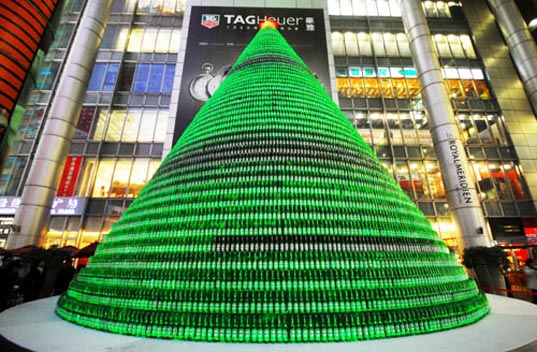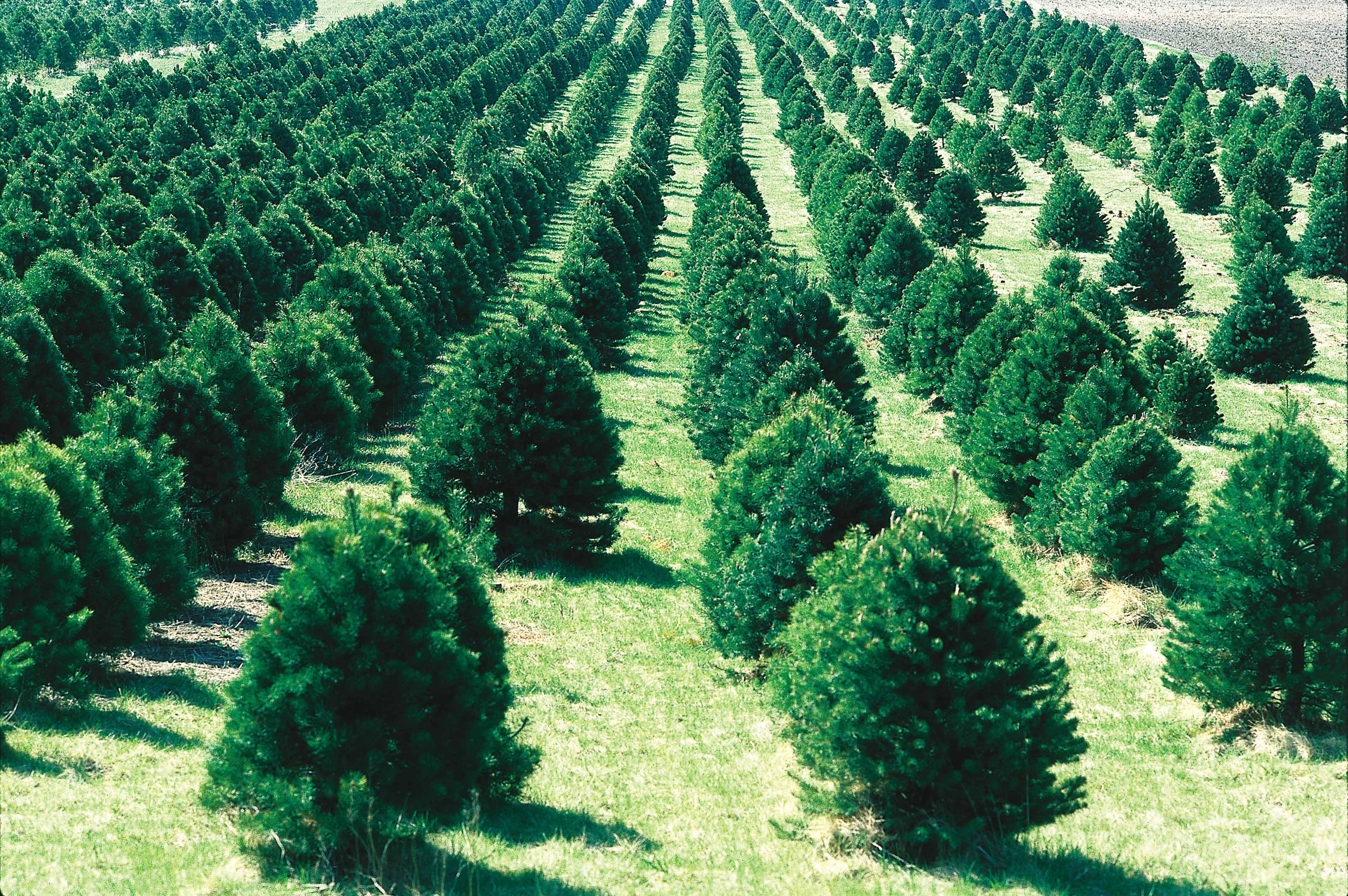The debate about real versus artificial Christmas trees used to be all about authenticity versus convenience. But these days, it’s also about which tree is truly the most earth friendly.
The debate rages on, starting up every year about this time. It never seems to be settled, because both options have their naughty and their nice aspects.
Believe it or not, the first artificial Christmas trees were made from toilet brush bristles in the 1930s by the Addis Brush Company, true – and eww! But don’t worry, most of today’s trees are made from metal and PVC, a petroleum based plastic product. There are other types of trees made from Mylar, fiber optic cable, or recycled materials including cardboard and newsprint. About 80 percent (is that all?) of the 10 million or so artificial trees sold in the U.S. every year come from China.
People who buy artificial trees cite the cost of real trees and the ease of setting one up, but the single most popular reason is the convenience: no watering needed, and no messy cleanup of needles all over the floor.
Real Christmas trees are still the more popular choice overall. Americans will buy more than 30 million real Christmas trees this year. Growing real trees is big business. A half million acres are in production to grow Christmas trees in the U.S., with 350 million trees growing at any given time. One hundred thousand people are employed in the Christmas tree industry.
During their production, Christmas trees absorb carbon dioxide from the air, and produce oxygen. But they may require applications of pesticides, herbicides and fertilizers. The ideal tree would be raised organically with integrated pest management, but this is rare.
In some parts of the country, the Christmas tree in your living room was trucked hundreds or thousands of miles to reach your local Christmas tree lot, which means the use of fossil fuels and other negative impacts of transportation. It’s less than an artificial tree coming from China, but if you keep an artificial tree a decade, it may even out.
Artificial trees don’t biodegrade, so after you dispose of one it will remain in a landfill for decades. Ninety-three percent of real Christmas trees are successfully recycled into mulch used in landscaping, or chipped and used for playground materials, hiking trails, paths and even beachfront erosion control.
We probably haven’t given you a compelling reason yet to make the call one way or another. It is a difficult choice. Add to the facts all of the emotion and tradition involved in your decision. If it just wouldn’t be Christmas for you without a real tree, no amount of reasoning will change your mind.

Creative solution in Shanghai, China: a Christmas tree made from thousands of beer bottles. Photo courtesy inhabitat.com
This discussion is a net positive no matter what you decide. Every time you buy something – and we know you will be buying a LOT of stuff this time of year – it gives you the opportunity to evaluate the environmental impact of your purchasing decisions. Stopping to think about it whether it’s a Christmas tree or another product is healthy all around.
So if you do choose a real tree, try to buy it from a local tree farmer. Don’t buy one on a large commercial lot where the trees have a long way on a big truck from a huge commercial tree farm without sustainable practices. If you are buying an artificial tree, find out whether you can purchase one made from recycled materials.
You can bypass this debate: consider a living, potted Christmas tree if it’s feasible for you. Roll it into the house for a few weeks, than plant it outside or donate it for planting after the holidays.
For me, it comes down to a single issue: fire safety. There is no doubt that real Christmas trees are the cause of numerous house fires every year, resulting in significant damage, injuries and even deaths. People forget to water. They use the wrong lights. They put the tree too close to heating sources. Or all of the above. According to the National Fire Protection Association, U.S. fire departments respond to an average of 230 home structure fires every year that were started by Christmas trees, causing six fatalities, two dozen injuries and over $18 million in direct property damage.
Artificial trees are usually fire retardant and very safe from fire danger. To me, living in Southern California and having experienced the loss of a home due to fire along with many other people, this ends the debate for me.


